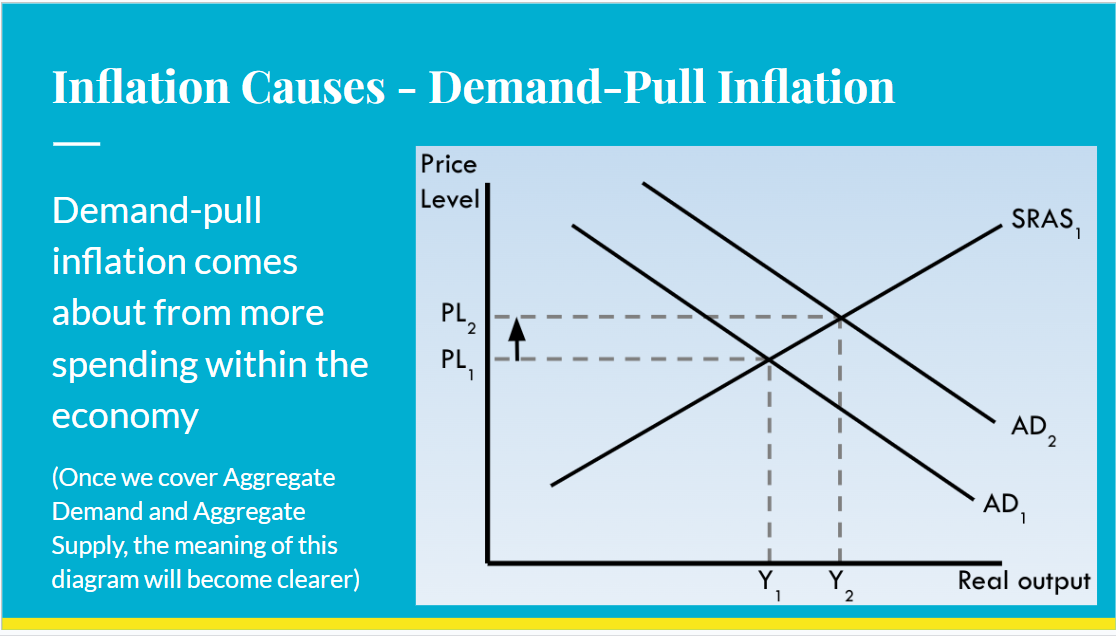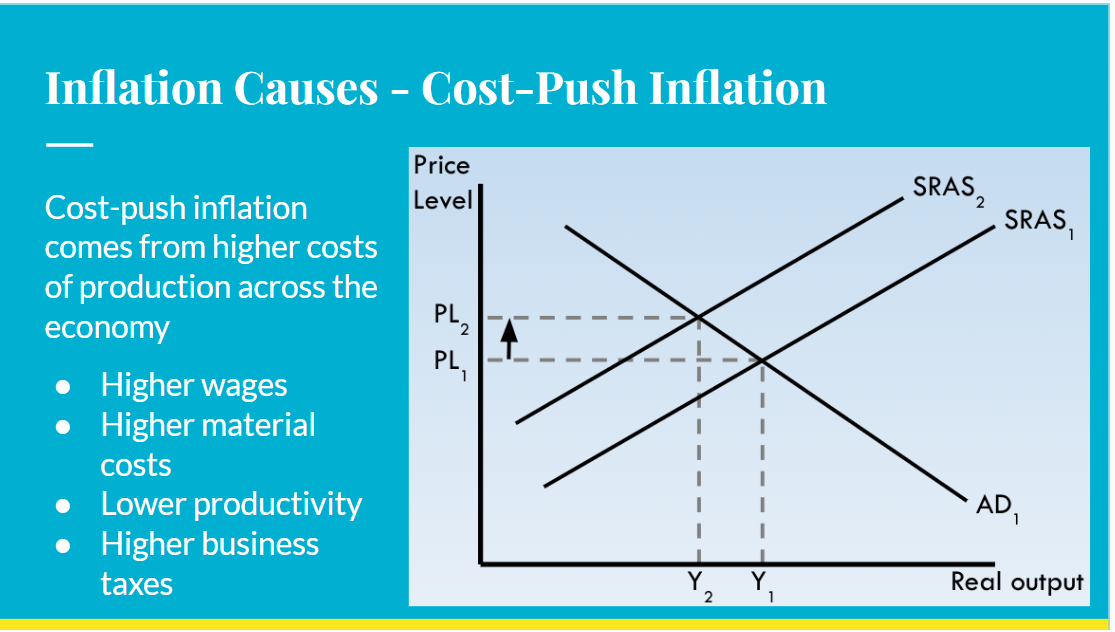2.1 Macroeconomics
1/56
There's no tags or description
Looks like no tags are added yet.
Name | Mastery | Learn | Test | Matching | Spaced |
|---|
No study sessions yet.
57 Terms
what are the four main objectives
High sustainable economic growth
low unemployment
low inflation
balanced current account
High sustainable economic growth
ideal is 2/2.5%
higher living standards
improved government finances
Low inflaton
Bank of England target is 2%
firms more likely to invest / makes firms competitive
price stability in the UK
Low unemployment
around 4% menas full capacity in the uk
less crime , less mental health issues
increased spending power for individuals
Balanced current account
for the uk this means reducing its current account deficit
country can afford to pay for the imports , a deficit means there is an outflow of money
Reduce Budget Deficit
Was a key objective of the conservative party 2010-2016
balance between tax revenues + government expenditure
Reduce inequality
Reduce child poverty wasa key pledge of Tony Blairs labour party from 1997
Environmental concerns
sustainable growth
preserving the planet
not causinga climate catastrophe
define economic growth
economic growth is a measure of an increase in real gross domestic product (GDP)
how is economic growth measured
it is measured by a percentage change in real GDP per annum, it can be shown by a shift on a ppf
Distinguish between real and nominal
Nominal GDP is the money value of all goods and services provided in one year
Real GDP is the nominal GDP adjusted for inflation
Distinguish between total and per capita
Total GDP represents overall GDp for a country whilst GDP per capita is total GDP is divided by the number of people in a country
Distinguish between value and volume
Value-GDP adjusted for inflation it is the size of the basket of goods and real level of GDP
volume of output measures the number / amount of goods produced
distinguish between GNI and GDP
GNI (gross national income) received by a country both domestically and via net incomes overseas
How can GDP measure living standards
as it gives information about the size of an economy and how well it is performing
Problems using GDP to measure living standards
-risk of double counting
-informal activity black markets , illegal activity
-errors via data collection
-negative externalities are not included ( cost of air pollution , loss of biodiversity )
Define the term purchasing power parities
take into account the exchange rate and cost of living in each country
what is the purpose of purchasing power parities
to make meaningful comparisons about other countries living standards
How does the UK measure national wellbeing
by asking 4 questions
overall , how satisfied are you with your life
to what extent do you feel your life is worthwhile
how happy were you yesterday
how anxious were you yesterday
Inflation
is a sustained rise in the general price level , the persistent increase of prices in a economy in one year
deflation
is a sustained fall in the general price level , often a sign of stagnation in a economy - INFLATION RATE NEGATIVE
disinflation
is a fall in the rate at which the general price level is rising
3% to 2% still increasing just less rapidly
How is the rate of inflation measured using the Consumer Prices Index
The living costs and food survey collects data from 7000 households in the UK
a price survey is undertaken once a month about changes in price of the most commonly used goods and services
weights are assigned to each item the average household buys the weights reflect the proportion of income spent on each item in the average shopping basket
the price changes are multiplied by the weights to give a price index
the rate of inflation can be measured by calculating the percentage change over the consecutive years
Limitations of using the CPI to measure the rate of inflation
It does not include housing costs
Basket updates are too slow “once a year”
sampling issues inaccurate responses
some households may not reply
differences between the CPI and RPI
the RPI includes housing costs whereas the CPI does not it is also not as reliable as the CPI
how is demand pull inflation caused
occurs when aggregate demand (total demand) in the economy increases at a faster rate than aggregate supply
-decrease in interest rates
-increased government spending
-a rise in business and consumer confidence
how is cost push inflation caused
aggregate supply decreases , ie total costs of production increase
a rise in taxes on businesses
increased minimum wage
Unemployment is counted as
people of working age that are able to work and actively seeking work but do not have a job
Unemployment rate
unemployed / economically active (employed + unemployed) x 100
Labour force survery
40k households are surveyed
they record who is unemployed,employed and economically active
what are the issues with the labour force survey
sampling errors
disparity between unemployment
inactive groups
discouraged workers
Claimant count
who is claiming unemployment benefits
what are the issues with the claimant count
difficult to compare between countries
not all claim and not all can
subject to fraud
the 4 components of the current account on the balance of payments
the trade in goods balance
the trade in services balance
the primary balance
the secondary balance
explain what is meant by current account surpluses and current account deficits
surplus - implies that a country’s current account is positive more money is flowing in than out
deficit - implies that a country’s current account is negative,more money is flowing out than in
what is meant by the current account
the current account records payments for transactions between countries in the present year
real income
Real income is the income of an individual or group after adjusting for inflation, reflecting the actual purchasing power.
causes of current account deficit
High rate of inflation relative to other countries
there is a high rate of economic growth in a country , people have higher incomes and tend to buy more imports from abroad
causes of a current account surplus
there is a low rate of inflation relative to other countries
there are low wage costs relative to other countries
the currency is too weak relative to other countries
Why might GDP per capita not reflect living standards?
GDP per capita doesn’t account for income inequality, non-market activity (like unpaid work), or quality of life (e.g. health, education, environment).
💡 Even if GDP is high, most people could still be poor if wealth is unevenly distributed.
how can real incomes influence a current account balance
1. Increased Imports: Higher incomes lead to more spending on imports, which can worsen the current account balance.
2. Export Competitiveness: Better income can boost domestic production, improving export quality and potentially enhancing the balance.
3. Investment Flows: Rising incomes may lead to more investments abroad, affecting the balance negatively.
4. Tourism Spending: Higher incomes can increase spending on foreign travel, which can also impact the current account negatively.
how can exchange rates influence a current account
1. Import Costs: Weaker currency raises import prices, reducing demand.
2. Export Competitiveness: Weaker currency lowers export prices, boosting demand.
3. Capital Flows: Exchange rate changes can affect foreign investment.
state of world economy how does it influence current account
1. Global Demand: Strong global growth increases demand for exports, improving the current account.
2. Commodity Prices: Changes in commodity prices can affect export revenues and import costs.
3. Investment Flows: Economic conditions can impact foreign investment, affecting income flows in the current account
how can protectionism influence the current account
1. Reducing Imports: Tariffs and quotas limit foreign goods, potentially improving the current account.
2. Encouraging Domestic Production: Protectionist measures can boost local industries, increasing exports.
3. Retaliation Risks: Other countries may respond with their own tariffs, which could harm exports.
how do non price factors influence the current account
1. Quality of Goods: High-quality products can boost exports regardless of price.
2. Consumer Preferences: Brand loyalty and trends can affect demand for imports and exports.
3. Trade Agreements: Favorable trade deals can enhance export opportunities and reduce import barriers.
real gdp
- Real GDP measures the value of all goods and services produced in a country.
- It is adjusted for inflation, providing a more accurate reflection of economic output.
- Allows for comparisons over time by removing the effects of price changes.
define the term gross domestic product
- GDP is the total value of goods and services produced in a country.
- It measures economic activity.
- Calculated using production, income, or expenditure approaches.
- Used for comparing economic performance.
gross national income
- Gross National Income (GNI) is the total income of a country's residents and businesses.
- It includes income earned abroad.
- GNI equals GDP plus net income from abroad.
real gross domestic product
- Real GDP is the value of goods and services produced, adjusted for inflation.
cause of inflation
- Increased demand
- Rising production costs
- Expansionary monetary policy
- Supply chain disruptions
- Expectations of future inflation
economic effects of inflation
- Less purchasing power: Money buys less.
- Higher living costs: Essentials become more expensive.
- Economic uncertainty: Businesses hesitate to invest.
- Rising interest rates: Central banks may increase rates.
- Wage demands: Workers ask for higher pay.
Demand pull inflation

Demand-pull inflation is caused by more…
more spending:
Consumer spending
Business investment
Government spending
Net exports (spending by foreign consumers)
Cost push inflation
